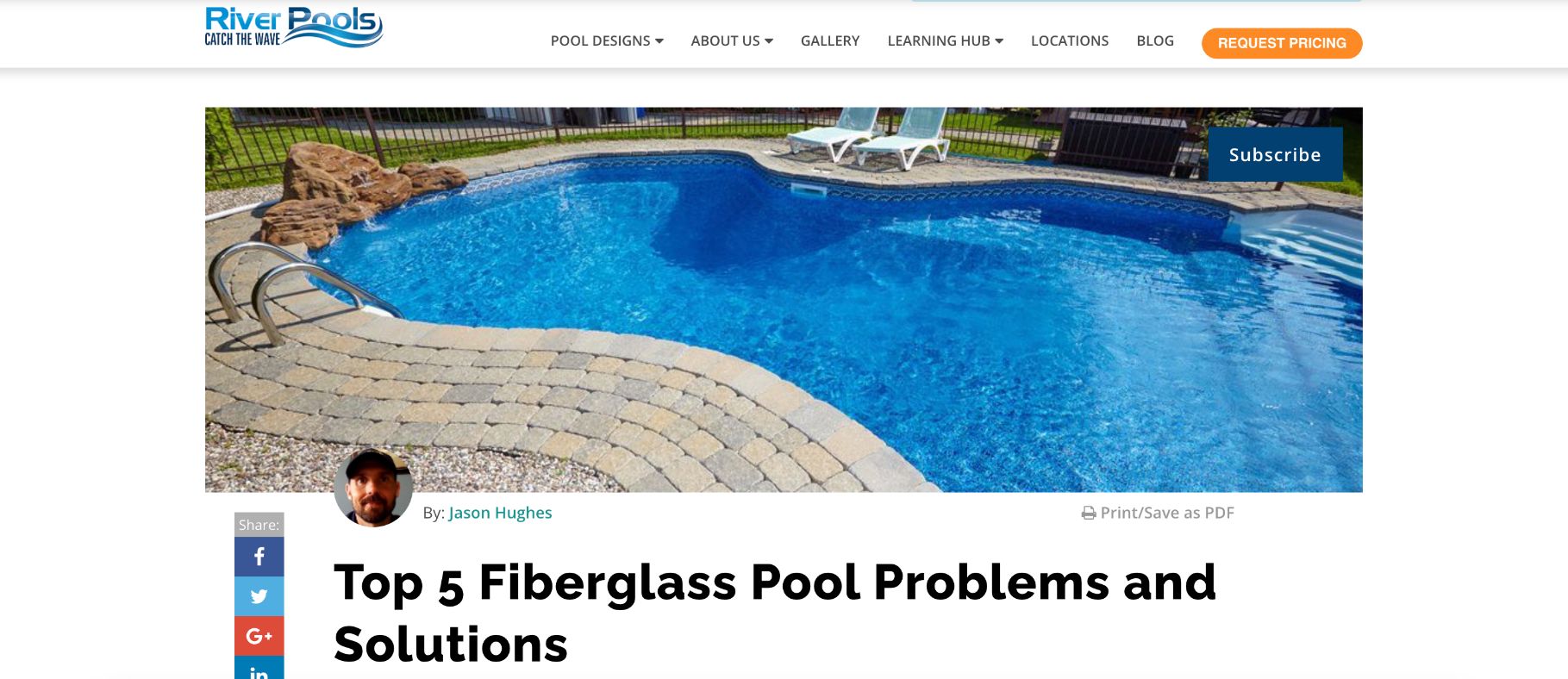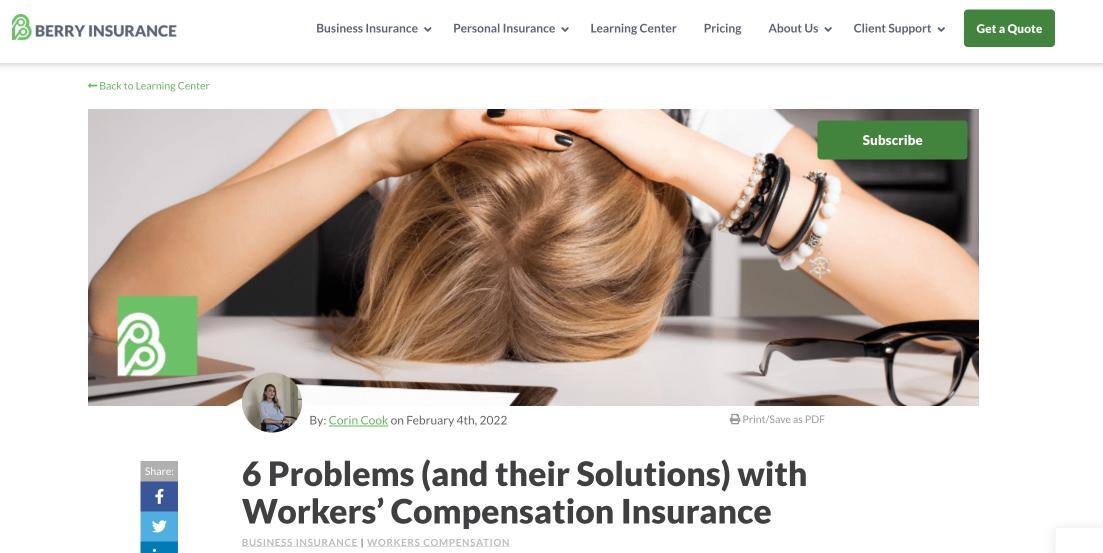Subscribe now and get the latest podcast releases delivered straight to your inbox.
The Big 5: 3 Simple Steps for Creating Great 'Problems' Content (+ Examples)

By John Becker
Aug 22, 2024

Ironically, one main marketing problem that most organizations have is that they're not talking about problems.
We believe it's critical that businesses openly address the drawbacks and shortcomings of what they sell.
I know what you're thinking — Why would I ever draw attention to our flaws? Won't that scare buyers away?
But in response to that, I ask, would you rather a potential customer find out about a problem with your product or service from you or on their own, or worse, from a competitor?
Creating "problems" content gets ahead of the rude awakenings that can lead to poor customer experiences, bad reviews, and negative word-of-mouth.
It creates alignment and realistic expectations with potential buyers right off the bat, helping them qualify or disqualify themselves early on.
And, in my experience, organizations that create it gain more trust, collect more leads, and overall, earn more clients.
That's why it's one of what Marcus Sheridan calls The Big 5 — the five topics that are most critical to your marketing strategy.
In this article, I’ll provide some examples from companies that are doing a great job with their "problems" content and walk you through three simple steps for creating yours:
- Identifying your problems
- Finding the right angle
- Showing a solution
But first, let's start with "why?"
Why you need to be open about problems, drawbacks, and shortcomings
As a content trainer, I spend a lot of time coaching my clients on how to cover The Big 5, the five topics that drive the most traffic, leads, and sales for successful inbound companies.
Talking about your problems — specifically talking about the shortfalls in your product or service — is definitely on that list.
That’s right. Putting it all out there, the good, the bad, and the ugly, is a fantastic way to build the bottom line. It's natural to be wary, but here's the reality: If you don’t address it, someone else will.
Your buyers are out there looking for information that can help them reach a conclusion. And you know they’re not only looking for positive reviews. They want the dirt, the difficulties, and the cons so that they won’t be surprised after the purchase is made. (After all, there's a reason we're so drawn to 1-star reviews!)
Creating content marketing materials that are candid about problems allows you to do a few things:
- First, you position yourself as the trustworthy authority in your space. As we all know, the best time to address a problem is before it comes up.
- Second, you help bad-fit prospects opt out of your sales process. If you're honest about you sell, bad-fit buyers are less likely to move forward — meaning you won't waste your salespeoples' time on the wrong prospects.
- Third, you eliminate the fear and resistance of your buyers by letting them know in advance what they might experience.
Some buyers will see these cons, balance them against the pros, and be fine with the decision to move forward. Some will choose to shop elsewhere, and that’s okay.
You’ve armed those prospects with the power to opt out so no one’s time gets wasted.
So, how is a great “problems” article created?
1. Identify your problem(s)
The truth is, no single product or service is the right fit for everyone.
You’ll find much more success when you admit this to your potential buyers and show that, yes, there may be some drawbacks with the solution you offer.
So how do you know what problems to discuss?
A simple way to evaluate if a problem is worth disclosing is if it will affect your customer's overall experience with your offering.
For example,
Could it lead to them not accomplishing their intended goal?
Could it lead to spending more money?
Would it actually harm versus help them?
Is it something that would lead to them writing a poor review?
If the answer to any of these questions is true, you're best off addressing it in your content.
2. Choose the right angle
Problems content can take many forms, and the great news for content creators is the range of angles and formats you can take. For example, consider these:
- "The top X problems with Y"
- "The X problems with Y you're likely to miss"
-
"The most common problems rookies may experience — and how to avoid them"
-
"Why is X not working and what you can do about it"
- "The X Reasons Why Y Fails"
- "X Reasons Why Y Isn't the Right Choice for You."
NOTE: Don't be afraid to write this from the perspective of someone who isn't right for you or your services. This kind of honesty will only help you weed out bad-fit prospects without wasting man-hours on your sales team.
All of these are different approaches, but they all come back to the same goal: Being open and honest about the experience someone will have with your product or service.
In his book They Ask, You Answer, Marcus Sheridan talks about what happened when he confronted potential problems at his company River Pools and Spas.
You see, his company only offered fiberglass pools, which come with both pros and cons. In some cases, a fiberglass pool is perfect. In others, it's the wrong choice.
Rather than pretend that fiberglass pools were the best choice for everyone, Marcus took the honest approach to their shortcomings.
The post, “Top Fiberglass Pool Problems and Solutions,” resulted in more than $500,000 in revenue.
Sheridan reflected:
"Now, you might think it would be insane for us to write an article with that title and, believe me, so did many people in our industry. But look at it this way: How many of our competitors were addressing that question on their websites? Of course, the answer is none.
Yet, how many consumers were wanting to know the answer to said question?
Pretty much all of them."
The title may be daring, but the content is even more brazen, detailing specific issues with fiberglass pools that may turn people off.
Again, that’s okay. Showing how your product may not be the best fit will save both you and your prospect valuable time.
Note: Bonus points to River Pools for also creating a video that covers the topic!
At IMPACT, we zeroed in on our position as a HubSpot Solutions Partner (formerly known as a HubSpot Partner Agency), with the article “The Problems with Working with a HubSpot Partner Agency.”
Whether you sell a product or a service, there are likely issues that you can disclose to your audience in "problems" content.
Remember, we’re all in the business of trust, regardless of what we’re selling.
3. Show a solution
Now, sometimes profiling a problem will turn a buyer off. Other times, if you can show a solution to the problem, you can bring yourself one step closer to a new customer.
You want to stay humble enough to put yourself out there, but you also want to show that you have the authority and the knowledge to solve for any shortcomings.
In fact, topics like "X Challenges & How to Avoid Them" put solutions front and center.
As an example, see Berry Insurnace's article on the problems with (and solutions for) worker's comp insurance.
A prospect can easily see that Berry knows what it's talking about and can help you deal with these problems if you face them.
By educating its audience, Berry is giving shoppers the confidence they need to move forward with a purchase.
What about buyer and competitor problems?
When it comes to "problems" articles in the context of The Big 5, we're only talking about problems related to your business's offering or industry.
But that doesn't mean talking about problems with your competitors or other problems your buyers may face is off limits. In fact, these are great topics to build awareness of your business and educate your audience.
(Plus, if your buyers are asking questions about them, you need to answer, right?)
Put yourself in the position of your buyer. Then, make a list of the issues they have that would drive them to look to you for a solution.
In many cases, they might not even know they have a problem you can solve. It’s up to you to recognize their symptoms, identify the problem, and outline the options that are available to them.
Yale Appliance + Lighting does this well in its company learning center.
Their article, Kitchen Nightmares: 11 Renovation Mistakes to Avoid speaks to a problem, they don't directly solve themselves. As an appliance retailer, Yale is connected to kitchen renovations, even though it's not their direct business.
However, they can be sure that their potential customers are thinking about design mistakes when they look to make appliance updates.
In another example, West Roofing Systems addresses common leaking roof problems content head-on in the ebook, "Commercial Roof Leaks: Detection and Causes."
Their landing page copy describes the tactic they’re taking – helping the prospect detect the problem (a leaky commercial roof), finding the causes of the problem, and then creating an action plan to solve it.
In both cases, the prospect most likely came to the web and searched for their potential symptom (kitchen design mistakes or a leaky roof, for example), found the content, and left the site knowing what problem they have and the best way to solve for it.
Whether or not Yale and West Roofing make the sale directly, they’ve informed their buyers of their options and have built a basis of trust.
Create fearless content
"Problems" content isn’t the place to pull punches or withhold information.
As the authority in your industry — and as an honest, authentic voice — it’s up to you to help people make smart, confident buying decisions. That means laying all of the cards on the table, even if they're not necessarily in your favor.
Rely on what you’ve learned from speaking with and selling to your customers. What are the common objections they raise? Those are problems you should openly address in your website and sales enablement content.
Inbound marketing is about being unapologetically helpful. Go put yourself out there and start talking candidly about all your problems.


Order Your Copy of Marcus Sheridan's New Book — Endless Customers!


